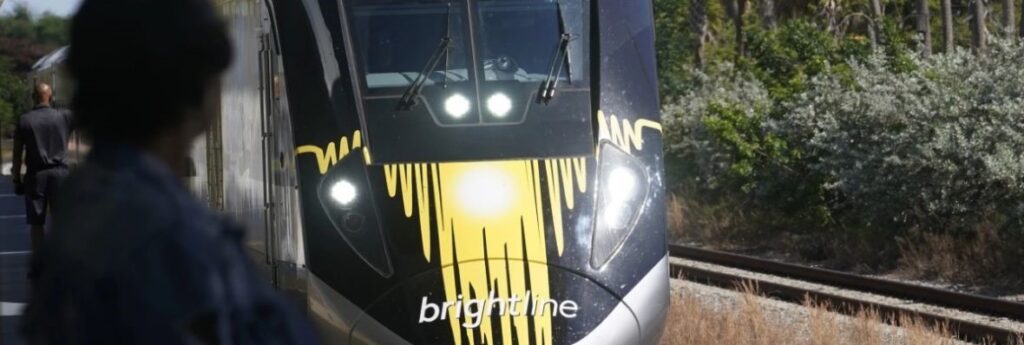The US federal government says it will give more than $6 billion to a pair of high-speed electric rail routes in California – from Los Angeles to both Las Vegas and San Francisco – injecting new life into long-stalled projects hailed by supporters as the future of public transportation but bemoaned by critics for their high price tags and lengthy construction times.
The investment will include $3 billion for a planned privately-owned route between Las Vegas and the Los Angeles area, to be built by Florida-based Brightline Holdings LLC, which began construction of the only privately-owned and operated intercity passenger railroad in the US in 2014 and which now links Miami and Orlando with trains reaching speeds up to 200 kph.
Hopes are that the line can be operational by the time Los Angeles hosts the Olympics in 2028.
There’s also another $3.1 billion earmarked for an initial segment of California’s publicly funded effort to eventually connect Los Angeles and San Francisco.
The money is a fraction of the total cost to build the routes, but it signals the Biden administration’s commitment to high-speed rail, a mode of transportation commonplace in Europe and Asia but bypassed in the US and its car-obsessed culture.
“The federal government is back on building high speed rail in America,” said Brian Kelly, CEO of the California High-Speed Rail Authority that is overseeing the public project. “This award is just a great leap forward.”
In 2008, California voters gave their blessing for a 800-km project that promised to carry passengers between Los Angeles and San Francisco in under three hours on a fully electric train traveling at speeds of up to 354 kph. At the time, the project was projected to cost about $30 billion and be up and running by 2020. If running today, it would be the nation’s fastest train service by far.
But more than a decade later, the price has ballooned to more than $100 billion, of which only about $25 billion in funding has been identified by state officials. Today, officials are focusing on a 190-km stretch that would connect the cities of Merced, Fresno and Bakersfield that would not open until 2033 at the latest. Those three cities are in California’s Central Valley, which has some of the worst air quality in the country. The $3.1 billion would go exclusively toward work on that segment.
Kelly, CEO of the California High-Speed Rail Authority, said the new federal money will help close a funding gap of about $10 billion for the Central Valley route. He said the authority will look for more money in the future from both the federal and state governments. California Democratic Gov. Gavin Newsom called the funding “a vote of confidence” and said it comes “at a critical turning point” for the project.
Funding for the project has been on a rollercoaster in recent years, with former President Donald Trump trying to revoke $1 billion in federal money first granted by the Obama administration. Then state lawmakers, including Democrats, tried to block Gov. Gavin Newsom from releasing more than $4 billion in voter-approved bond money due to concerns about the project’s viability. Both pots of money have since been made available.
Las Vegas
The route between Las Vegas and Los Angeles has been talked about for decades, and Nevada US Sen. Jacky Rosen told reporters the project now has all required right-of-way and environmental approvals, along with labour agreements, for work to start on some 351 km along the Interstate 15 corridor.
No date was announced for work to start, but Wes Edens, founder and chairman of Florida-based Brightline, said, “We’re ready to get to work.”
Planners say trains carrying passengers at nearly 322 kph could cut in half a four-hour freeway trip from a station in Las Vegas through Victorville, Ca., to a suburban Los Angeles light rail line in the San Bernardino County city of Rancho Cucamonga.
They say the service could help alleviate weekend or end-of-holiday travel traffic jams that often stretch for 24 km on I-15 near the Nevada-California line.
Calls for a high-speed rail line whisking tourists through the Mojave Desert to Las Vegas date at least to 2001. The proposal had starts, stops and various names over the years, before getting sidetracked during the COVID-19 pandemic.

